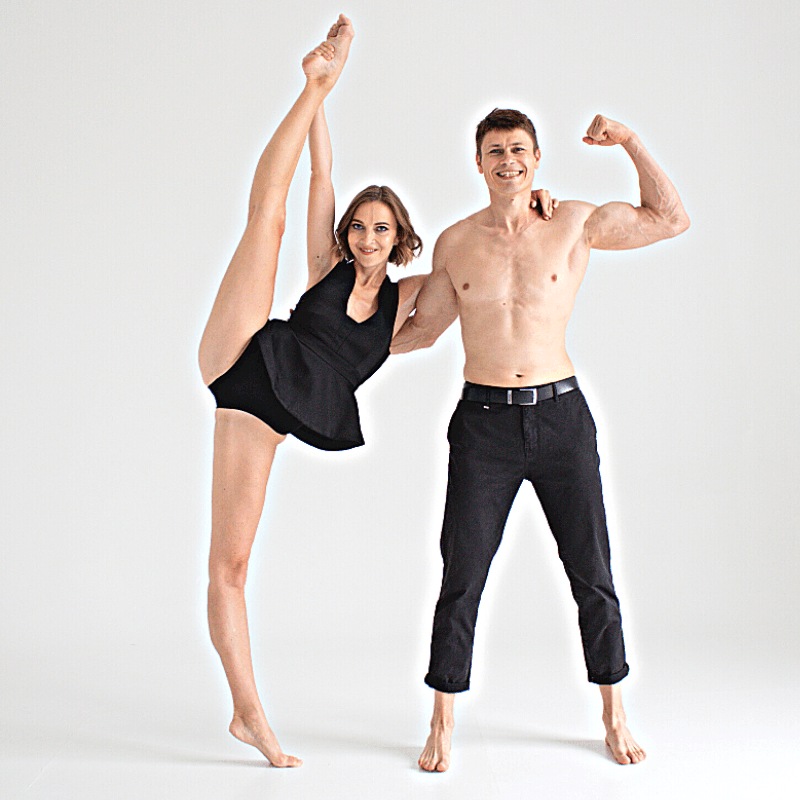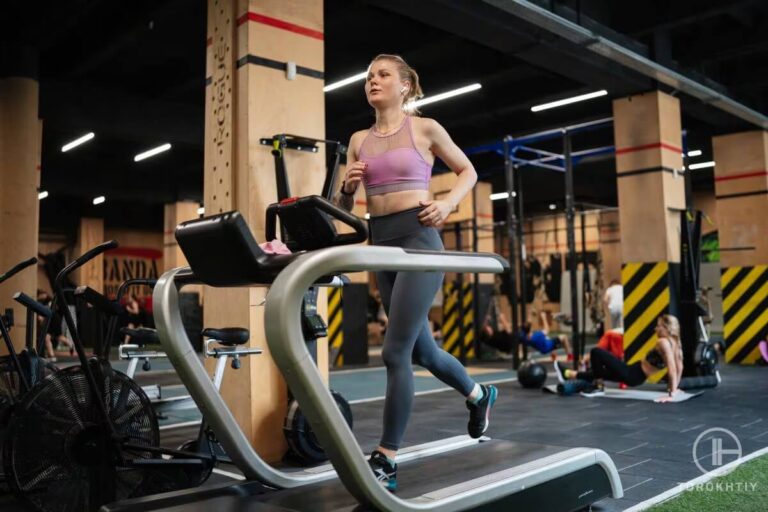How to Do the Splits in 30 Days With Minimal Effort! [Tips from Cirque du Soleil artist]
Ever wondered how to do the splits in 30 days? Although mastering this position might seem incredibly hard, you can actually do it in a pretty short time. By simply using the right stretches for splits, you can increase overall flexibility, which would allow you to execute this pose.
In this article, we share a few tips to get your splits in 30 days, what types of splits are there, and why they are important.
Learning how to do the splits in 30 days isn’t that hard with the right guidance. A combination of stretching exercises is the key to mastering this pose, but you also need to be consistent and warm up properly.
.
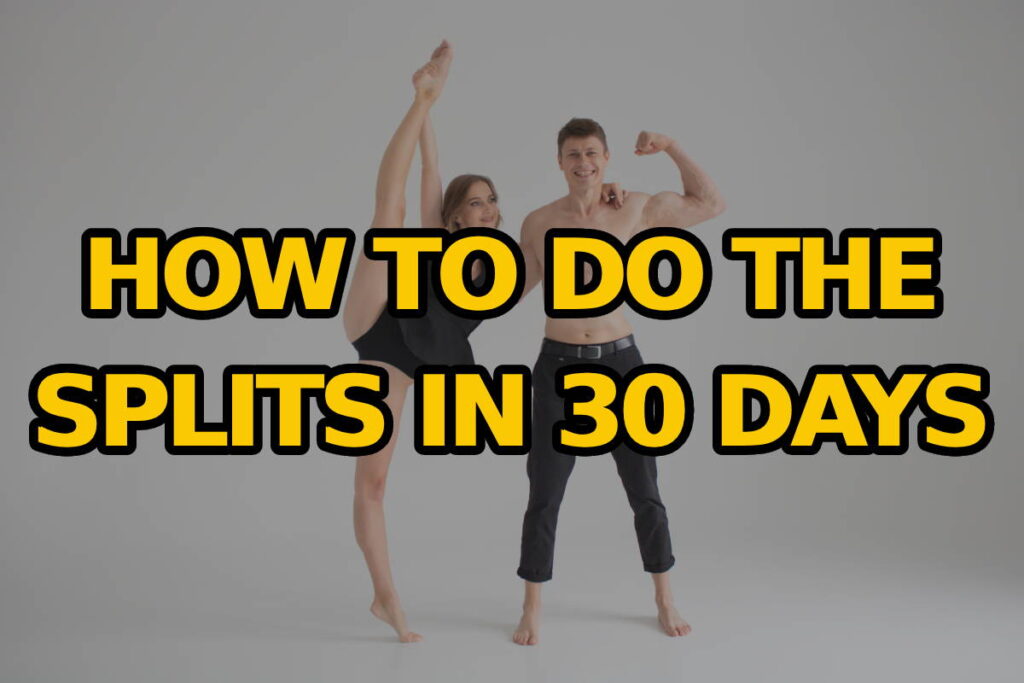
What Types of Splits Are There?
Before you start your journey to splits, you should first learn about different poses. Most experts focus on the front and middle splits, but there are also a few other advanced positions you can execute:
1. Half Split
The best way to learn the splits in 30 days is by starting with half splits. As the name implies, you’re only partially stretched during this pose. The exercise starts on the floor, with both legs stretched in front of you. Now, pull one leg behind, putting strain on the glutes and hip flexors.
We suggest that you alternate between the legs. This is the best way to build flexibility for splits.
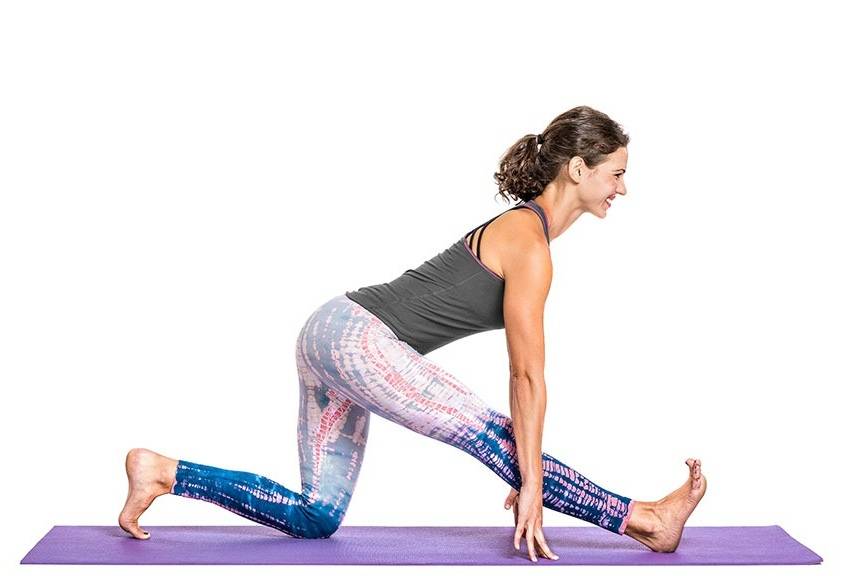
2. Front Split
Although the half splits help with all variations, they’re best for the front splits. Like with the half splits, the frontal ones put one leg in front of you and one leg in the back. You start from the standing position and slowly slide both your feet on the ground.
Keep in mind that you don’t have to immediately do the entire split. You can slowly build up your flexibility until you’re able to properly execute the pose. Make sure to place both hands on one side for extra stability.
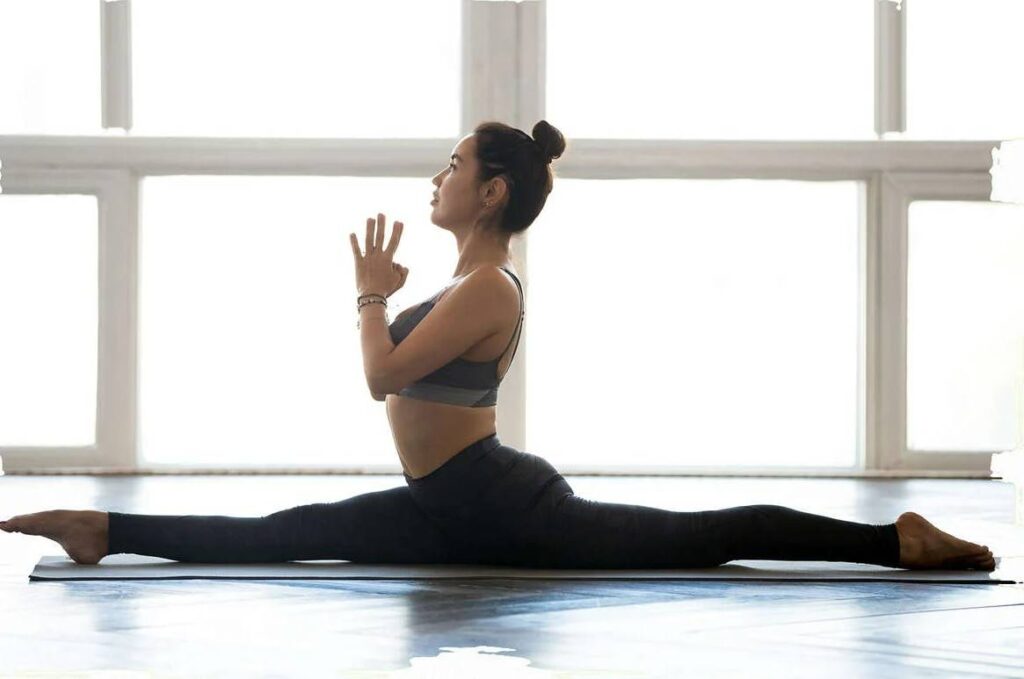
3. Side Split
The side split, also referred to as Chinese or straddle, is a variation where your torso is in the middle, and your legs are outstretched to the sides. If you’re a beginner, we suggest you do it by sitting down and stretching your legs as far as you can, thus slowly increasing flexibility.
Alternatively, like with the front splits, you start from the upward position and slowly start splitting your legs to the sides. While doing so, keep your hands in front of you, and use them as support. Slide down until you start feeling the stress on your thighs and hips.
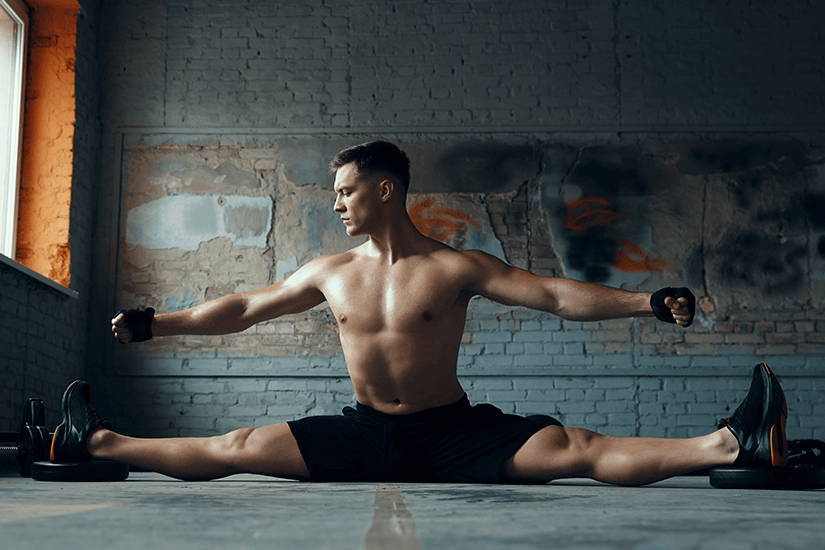
4. Middle Split
This is a variation of the side split with your toes and feet stretched on the floor. Mastering the middle splits in 30 days isn’t always possible, so you might require some extra work. Ideally, you should get into this pose by slowly sliding down from a standing position while using your hands for extra support.
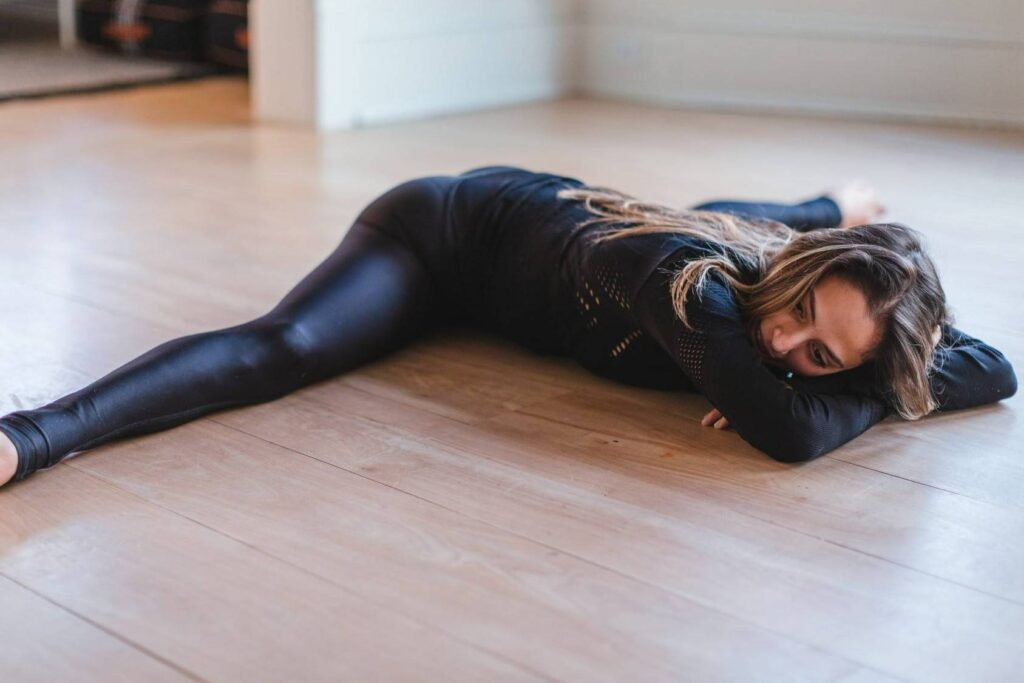
5. Standing and Jumping Splits
If you’re a beginner, you should definitely avoid these two positions. With standing variation, you’re doing the split while standing on one leg while the other is stretched in the air. Jumping split requires doing the split while jumping, which is even harder.

Why Are Splits Important?
Doing a 30 day split challenge sounds pretty cool. However, there are much more tangible reasons why people want to master this pose:
1. Flexibility and Range of Motion
When we talk about the benefits of splits, the first thing we think of is improvements to your range of motion. However, for the best results, experts indicate that you should add strength training to further improve your ability.
Improving your range of motion carries numerous direct and indirect benefits. Besides allowing you to execute certain workouts and become better at sports, it also reduces the risk of injuries. Having flexible muscles with a wide range of motions is better at absorbing sudden movements and impacts.
Increased flexibility and range of motion are especially great for people suffering from various types of arthritis, such as osteoarthritis. It’s also great if you’re suffering from joint or back pain. Overall, using splits can improve your physical and mental health and, with that, your overall vitality.
2. Muscle and Joint Strength
You might be surprised to hear this, but many of us start doing splits to improve the strength of our muscles and joints. Most people don’t even realize this, but constant stretching has a massive impact on your tissue. By the time you master this pose, your muscles and joints will be significantly stronger.
This makes splits a perfect exercise for those who have suffered joint injuries. It can also work really well for older people who have started experiencing the drawbacks of old age. However, splits are also excellent for amateur and professional athletes who want to place emphasis on hips, glutes, and thighs.
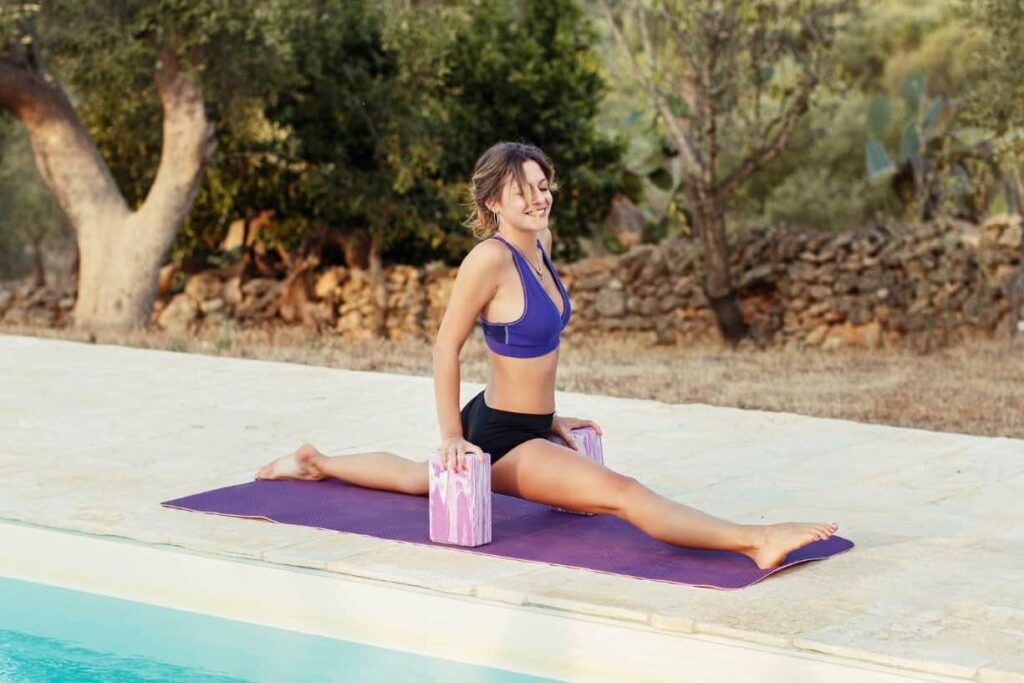
3. Balance and Coordination
Implementing the splits in your daily routine can also assist with balance and coordination. This is especially true if you try some more complex variations of the pose, such as jumping splits or standing splits.
Keep in mind that these improvements don’t come only from the splits but also from associated exercises. For example, you’ll have to perform various types of movements and stretches to master this position. By doing so, you’ll increase the strength and flexibility of your joints and tendons. All of this can make a difference in your balance.
As your legs become stronger and more versatile, you can adjust to various types of movements. Furthermore, even if you experience a mishap, your body is more capable of absorbing that fall. This is especially important for the elderly who are slowly losing their motoric functions.
4. Mental Stability
Aside from all the physical benefits, the splits are also fantastic for your mental health. This position is often used by yoga enthusiasts as a part of their usual routine, but also by other athletes.
While doing splits puts a lot of stress on your body, it’s also very fulfilling. It allows you to put your mind at ease and mentally relax during workouts. As a result, you’ll reach a new level of calmness, which can also help people suffering from various mental ailments.
How to Do the Splits in 30 Days?
So, how to do a split in a month, and is it even possible?
You’ll be glad to hear that the answer is a resounding yes! Just about anyone can master this position with the right attitude and by investing a certain amount of time. However, that doesn’t mean that all of us will learn it in a month. Some people might take more depending on their conditioning, body type, overall flexibility, and age.
Basically, you’ll need to implement various stretching exercises to do a split. You’ll need to develop almost all leg muscles, including calves, hip flexors, quads, glutes, psoas, hamstrings, and so on. Here’s a program that will help you reach that goal:
1. Half Splits
If you wish to learn how to do the splits without pain, we suggest you focus on this stretch to slowly increase the flexibility of your leg muscles. The best one is definitely the half splits, which require a similar motion as the regular splits. This form of stretching puts emphasis on your hamstrings.
Start by kneeling on one knee, and then stretch the other leg forward. While keeping your hands to the sides, slowly stretch the frontal leg to a pain threshold. Ideally, you should have a blanket under your leg for extra comfort and use blocks for your hands.
2. Runner’s Lunge
During the runner’s lunge, you take an outstretched leg position as if preparing for a sprint. The only difference, in this case, is that one of your legs is placed forward, in alignment with your shoulders. While doing this, both of your hands should be on the floor, at the level of your front leg.
Ideally, you would like to stretch your legs as far as possible to feel the burn in your thighs and groin. Besides these muscles, the runner’s lunge also engages the psoas, as well as hips and hip flexors. Like with the previous stretch, you can use blocks so it’s easier to connect with the ground.
Runner’s lounge requires that you put the back knee on the floor. However, you can also elevate it to make the stretch a bit more difficult. This places you in the so-called Lizard pose.
3. Reclined Hand to Big Toe Pose
Whether you’re preparing for the splits or other exercises that require leg flexibility, you can’t go wrong with reclined hand to big toe. This is the basic stretch used in just about any sport that focuses on your calves and hamstrings.
You need to do this stretch while lying on your back. While one of your legs is on the ground, start pulling the other toward you. Push the knee toward the chest, and try to grab your toes with your hands. If you can’t do that, try to grab your calves.
By using your hands, push the leg more and more toward your body. Alternatively, you can use a strap for this one. Just wrap it around your foot and grab the other end with your hand.
4. Standing Forward Fold
This is another classic pose that you can do as an integral part of any warm-up. Although the focus is on the back of your legs, this stretch is also nice for your spinal column.
As the name implies, you start from a standing position. All you have to do is bend down as you’re trying to grab your toes or touch the floor. While doing so, make sure your legs and knees are parallel to each other. If possible, try to completely fold your body with your chest touching the knees.
5. Half Pigeon
The half pigeon is a bit more complex position common for yoga. It’s a perfect stretch for everyone, especially if you’re looking to increase the flexibility of your hips. The best thing yet, when doing the half pigeon, you’ll have a similar body placement as with the frontal split.
To get into this position, you have to start from the downward-facing dog (arch your body in a triangle with only hands and feet touching the floor). Place the side of your leg on the ground while your knee is bent. Slowly bring your hips down until they touch the ground or make them “float around” above your thighs.
Your other leg needs to be outstretched during this pose. When done properly, you should feel a lot of burning in your back thigh and groin, but also your front thigh and hips.
6. Wide-Legged Forward Fold
This stretch places your legs in the shape of the reverse letter V. Basically, you need to create a triangle with your thighs forming a 90-degree angle. Once you’re in position, slowly lead forward while bending the hip and touching the floor with your hands. Avoid putting too much pressure on your back, and keep them straight throughout.
Wide-legged forward fold is a fantastic precursor for side splits. If you wish, you can push yourself by further stretching the legs and increasing the angle between your thighs. As you become more flexible, you can slowly lower your thighs until they connect with the ground.
7. Seated Head to Knee
This stretch places your legs in the shape of the reverse letter V. Basically, you need to create a triangle with your thighs forming a 90-degree angle. Once you’re in position, slowly lead forward while bending the hip and touching the floor with your hands. Avoid putting too much pressure on your back, and keep them straight throughout.
Wide-legged forward fold is a fantastic precursor for side splits. If you wish, you can push yourself by further stretching the legs and increasing the angle between your thighs. As you become more flexible, you can slowly lower your thighs until they connect with the ground.
How to Improve Your Splits?
Learning how to train to do the splits is much more than implementing a few stretches. It’s a meticulous process that requires a certain level of discipline and knowing your body. Most importantly, you need to be careful when stretching your muscles, as you don’t want to suffer any injuries during the workouts.
Here’s a list of things to do to get the best results in the shortest amount of time possible:
1. Prioritize Warm-Ups
Your main priority when doing deep stretches is to avoid injuries. When you start a workout, your muscles are very stiff and susceptible to damage. Like with rubber, you have to warm them up so they can bend instead of ripping.
Keep in mind that you don’t have to overdo it with exercises. Still, make sure that the muscles are warm to the touch and, ideally, that you’ve had a first light sweat. The best way to hasten your warm-ups is by wearing warm clothes during the initial exercises.
2. Go Slowly
Like with any other type of exercise or weightlifting, make sure to avoid any forceful and yanking movements. Your stretches need to “flow” as you slowly transition from one pose to another. Even if you wish to push yourself, take your time by slowly stretching your legs and body further and further.
Ideally, you should wait for a few seconds between your maximum stretch and your next maximum stretch. In other words, after bending your muscles as far as possible, give them a few and then, slowly, try stretching them forward a bit more. Take deep breaths in between, and don’t rush anything.
3. Create a Routine
Doing the splits takes a certain dedication. While almost everyone can learn this position, you’ll still have to train your muscles the right way. Ideally, you should have a daily workout routine that involves stretching for splits. Doing yoga is definitely advantageous as it will help you activate all leg muscles.
Aside from that, we also suggest that you use a timer. Generally speaking, you should hold every stretch for one minute, although you can start with a shorter time span, like 30 seconds.
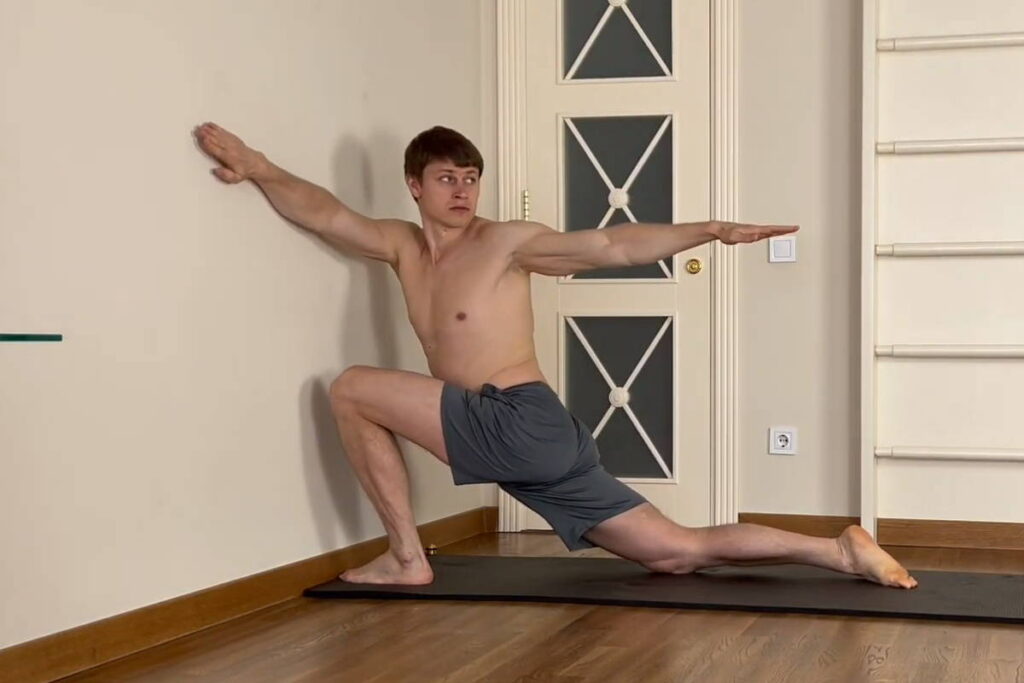
4. Work All Leg Muscles
The splits engage numerous leg muscles and require a certain level of strength and flexibility. So, although you can switch between different stretch routines, we advise that you avoid prioritizing a specific muscle group. Instead, try going with complex stretches that engage all lower body parts.
Then again, if a specific muscle is preventing you from getting into position, you might consider prioritizing it a bit while still working on the other parts. Aside from muscles, you should also think about joints. If they’re too stiff, this might prevent you from doing the splits, no matter how strong your muscles are.
5. Flexibility and Strength
Most people who want to master splits are active athletes who have a specific routine they stick to on a weekly level. They often perceive the splits as something cool to do but not a necessity for their workout goals. As a result, they often implement stretches to existing strength training.
Both of these are vital for your splits. While you need flexibility and range of motion to get to the split position, you also need muscles to retain the stability of your joints. Specifically, you need to have strong upper body muscles to support your lower body. So, make sure to implement some exercises to increase the strength of your core and lower back.
6. Focus on Breathing
Breathing is another factor crucial for stretching but also improving your splits. Most of us don’t pay any attention to their technique, which makes workouts significantly tougher. What’s worse, people tend to hold their breath or have irregular breath when stretching.
In such situations, their tissue can’t get enough oxygen and nutrients that would allow them to execute splits properly. As a result, they experience a lot of muscle tension, which takes away from their stretching potential. So, make sure that you’re relaxed when stretching and pay extra attention to your breathing technique.
7. Beating Boredom
Although we’ve given you a few suggestions as to which stretches to focus on, you can always create your own workout regimen. The most important thing is to create a routine that would work in all areas but also that won’t get boring too quickly. Among others, this means making relatively fast switches between different stretches.
8. Training Equipment
Like with all other exercises and workout routines, it’s vital that you feel good when stretching. You might think that the main goal is to push your body to the limits but don’t be too forceful while doing so. Instead, try to add as much comfort as possible.
Use blankets, yoga mats, blocks, and bands to relax and improve results during stretching but also when trying the splits. Bands are especially valuable for people who have limited flexibility, while blocks can provide additional stability.
🔻21-DAY SPLIT CHALLENGE
Unleash your flexibility potential with our progressive 21-day training program.
This program will help you to:
- ✅ Achieve a Perfect Split
✅ Boost Hip Mobility
✅ Sculpt Aesthetic and Sexy Legs
✅ Banish Stiffness
✅ Enhance Mental Confidence
☀️ Specially designed for you by a Cirque du Soleil artist, use it!
FAQ
Is It Possible to Learn the Splits in 30 Days?
You can learn how to do the splits in 30 days, but only if you fulfill certain prerequisites. Specifically, you need to stretch your lower body every day but without forcing your muscles and ligaments too hard.
How Many Days Will It Take To Do the Splits?
Most people can learn splits in a month or so. Of course, this might vary significantly depending on your age, flexibility, and muscle strength.
Are the Splits Healthy?
Doing the splits can be considered a healthy routine. Like any other type of stretching, this pose can increase the strength and flexibility of your muscles. It’s especially great for people who are suffering from joint issues or lack of mobility.
Conclusion
Learning how to do the splits can be very challenging but also very rewarding. Even though many people believe they could never get to this position, you would be surprised at how quickly you can master it. Doing the splits on a regular basis is not only flashy but also extremely healthy, promoting lower body flexibility and increasing range of motion.
Have you tried mastering the splits? How much time did it take? Share your experience in the comments below!
Also read:
- Front Splits
- How to Do a Handstand
- How to Hold a Handstand Longer
- Handstand Benefits
- Stretch Exercise for Splits
- How to Do Side Splits
- How to Do the Middle Splits
References:
- Stretching and injury prevention: an obscure relationship // NCBI: https://pubmed.ncbi.nlm.nih.gov/15233597/
- Role of Yoga and Mindfulness in Severe Mental Illnesses // NCBI: https://www.ncbi.nlm.nih.gov/pmc/articles/PMC6329226/
- Complementary and Alternative Exercises for Management of Osteoarthritis // NCBI: https://www.ncbi.nlm.nih.gov/pmc/articles/PMC3200004/
- Strength Training versus Stretching for Improving Range of Motion // NCBI: https://www.ncbi.nlm.nih.gov/pmc/articles/PMC8067745/
Why Trust Us?
With over 20 years in Olympic Weightlifting, our team does its best to provide the audience with ultimate support and meet the needs and requirements of advanced athletes and professional lifters, as well as people who strive to open new opportunities and develop their physical capabilities with us.
By trusting the recommendations of our certified experts in coaching, nutrition, dietology, and sports training programming, as well as scientific consultants, and physiotherapists, we provide you with thorough, well-considered, and scientifically proven content. All the information given in the articles concerning workout programming, separate exercises, and athletic performance, in general, is based on verified data. We ensure that you can rely on our professionals’ pieces of advice and recommendations that can be treated as personalized ones which will benefit you and fully meet your needs.
The product testing process is described in more detail here
Author: Oleksiy Kononov
Former Cirque Du Soleil Artist
Ukrainian Gymnast
More than 25 years ago Oleksiy started his sports career. He major in gymnastics which is definitely not an easy sport to go in for!
To become an athletic champion (in Ukraine, for instance, we mean here the title of “Master of Sports”) in gymnastics, one needs to spend at least 10 years and start training no later than being six years old. As for Oleksiy, he has fulfilled all the criteria.
During this period of time, definitely not short, he managed to become:
- Master of Sports, Champion of the State and International Tournaments;
- Member of the national team of Ukraine, having a perfect opportunity to train the best team ever!
- Part of Cirque Du Soleil team (as an artist).

